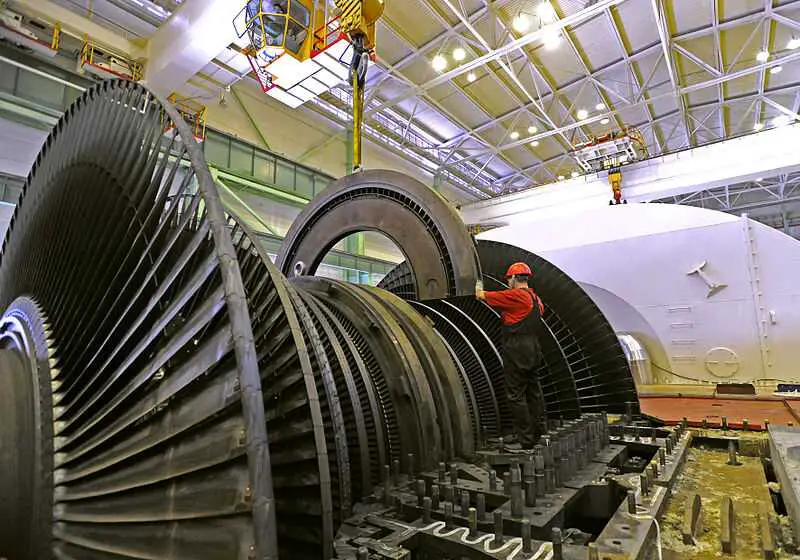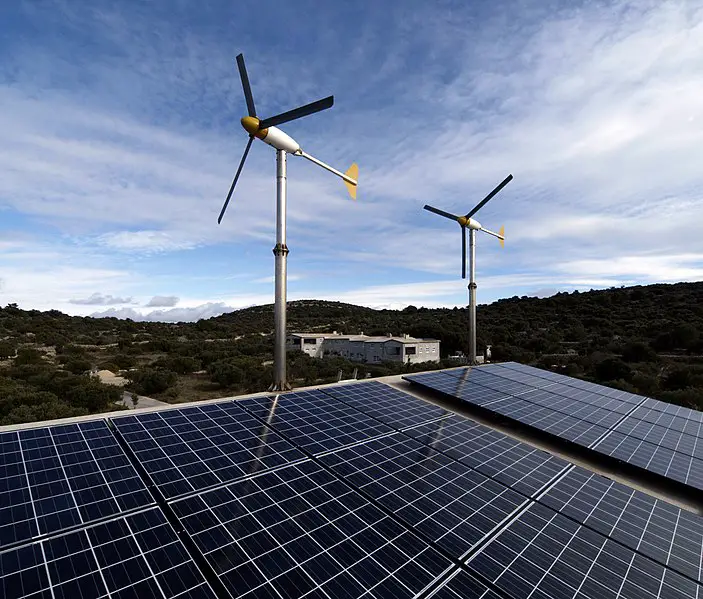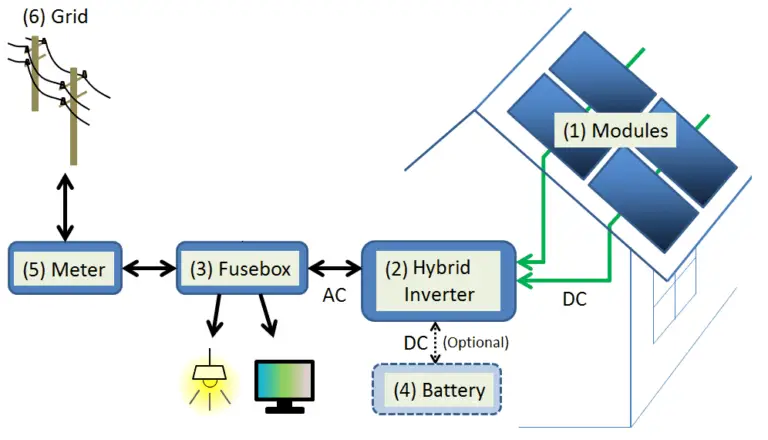5 Characteristics of Steam Turbines Explained
Characteristics of steam turbines are; design-dependent efficiency, multiple components, variable size/scale, auxiliary attachments, and multi-pressure compatibility.
This article discusses the characteristics of steam turbines, as follows;
1). Design-Dependent Efficiency (as one of the Characteristics of Steam Turbines)
The energy efficiency and performance of a steam turbine depend heavily in the design of the turbine.
This can be observed when comparing the overall performance of impulse and reaction turbines.
The design characteristics of reaction turbines include axial fixed blades and movable blades, where the former are used to capture steam velocity and the latter are used to capture steam pressure.
This multipurpose design makes reaction turbines conserve energy better than impulse turbines, which have movable blades and depend solely on steam pressure.
In other types of steam turbines like extraction-back pressure turbine, efficiency can be improved by optimizing the sizes and positions of steam valves [1].
Generally, steam turbines are more efficient when designed to have less weight and fewer components.
Asides system design, environmental parameters like temperature and pressure can affect the performance and efficiency of a steam turbine.
The efficiency of steam turbines is generally above 40% [2], and may be improved by up to 10% in most cases, by optimizing variables like design, temperature and pressure [3].
2). Multiple Components
A steam turbine is made up of multiple components or parts that are fitted and fabricated together.
The various parts of a steam turbine include; casing, rotor, shaft, blades, nozzle, speed regulator, and runner [4].
Each of these components has a definite function or set of functions, that contribute to the overall working of the turbine.
The number and nature of parts found in a steam turbine depend on its size, design details, purpose, and complexity.

3). Variable Size/Scale (as one of the Characteristics of Steam Turbines)
One of the most prominent characteristics of steam turbines is that they can occur in a broad variety of sizes according to existing need.
Sizes of steam turbines include micro, small, large, and mega turbines; whose size values are generally defined across a range from less than 1 kW to over 1,000 MW.
Steam turbine size is usually evaluated based on its electricity-production capacity, and the exact range of values for any given size-class differs from one assessment to another.
Differences in size often goes along with differences in design and output, as well as cost of installation and maintenance.
4). Auxiliary Attachments
Steam turbines are usually equipped with secondary components, also called auxiliary attachments, systems, or simply 'auxiliaries'.
Turbine auxiliaries are all equipment directly linked to a turbine, whose functions are supportive of the main function of the turbine.
Auxiliary components of a steam turbine are; condensers, coolant pumps, and oil tanks, among others.
These are different from the auxiliary components of a steam power plant, which include; pre-heater, safety valves, gauges, piping, and water column.
Because they are external, auxiliary components are usually evaluated separated in any analysis of steam turbine systems [5].
5). Multi-Pressure Compatibility (as one of the Characteristics of Steam Turbines)
Steam turbines operate at various levels of pressure, including high pressures above 200 psig, and low pressures below 50 psig.
Based on their most-suitable operating pressure, turbines can be classified as high-pressure and low-pressure turbines; where the high pressure systems are more adapted to higher pressure conditions, and vice versa.
It is important to note that a singular steam turbine can operate at various pressures (and temperatures) at various stages in its operational cycle.
In the same vein, a steam turbine can combine the attributes of various types of turbines in order to function optimally at different stages.
For example, a turbine can have impulse characteristics at its high-pressure stages, and reaction characteristics at its low-pressure stages.
Most turbines work under atmospheric pressure, especially at the stages that do not require high specification of physicochemical conditions, such as the exhaust stages.
For other active stages like the energy capture and conversion stage, pressure conditions are strongly determined and influenced by the pressure of steam itself.

Conclusion
Characteristics of steam turbines are;
1. Design-Dependent Efficiency
2. Multiple Components
3. Variable Size/Scale
4. Auxiliary Attachments
5. Multi-Pressure Compatibility
References
1). Decock, J. (2014). "Hybridization of dynamic optimization methodologies." Available at: https://www.researchgate.net/publication/281331135_Hybridization_of_dynamic_optimization_methodologies. (Accessed 2 March 2023).
2). Dosa, I.; Petrilean, D. C. (2013). "Efficiency Assessment of Condensing Steam Turbine." Available at: https://www.semanticscholar.org/paper/Efficiency-Assessment-of-Condensing-Steam-Turbine/1f01020436e10ad354c30be58a1bb2a52167a44d. (Accessed 3 March 2023).
3). Huijun, F.; Chen, L.; Tang, W.; Ge, Y. (2022). "Optimal Design of a Dual-Pressure Steam Turbine for Rankine Cycle Based on Constructal Theory." Energies 15(13):4854. Available at: https://doi.org/10.3390/en15134854. (Accessed 3 March 2023).
4). Kareem, B.; Ewetumo, T.; Adeyeri, M. K.; Oyetunji, A.; Olatunji, O. E. (2018). "Design of Steam Turbine for Electric Power Production Using Heat Energy from Palm Kernel Shell." Journal of Power and Energy Engineering 06(11):111-125. Available at: https://doi.org/10.4236/jpee.2018.611009. (Accessed 3 March 2023).
5). Mrzljak, V.; Sencic, T. (2018). "Change in Steam Generators Main and Auxiliary Energy Flow Streams During the Load Increase of LNG Carrier Steam Propulsion System." Pomorstvo 32(1):121-131. Available at: https://doi.org/10.31217/p.32.1.15. (Accessed 2 March 2023).


